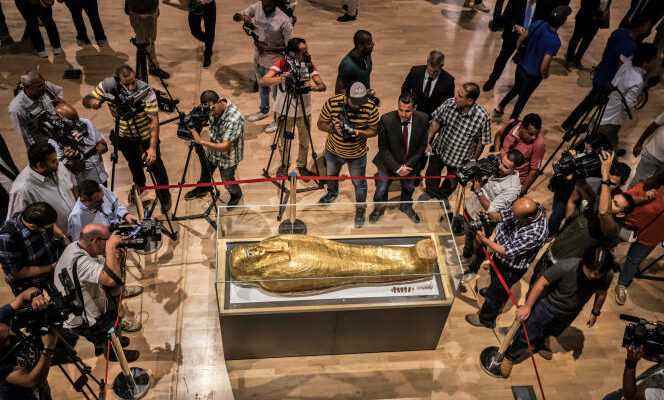In the investigation into the trafficking of Egyptian antiquities which, on May 25, led to an indictment of Jean-Luc Martinez, the former president of the Louvre Abu Dhabi, a family appears, with a capital role, that of provider. The Simonians, art dealers who operate in an opulent building on Oberstrasse, a quiet, tree-lined street in a residential area of Hamburg, Germany. They would be the ones by whom the scandal begins, according to the elements – summary notes and minutes of hearings – compiled by French investigators and consulted by The world. The police are working as part of an investigation opened in 2018 and led by Judge Jean-Michel Gentil. Without the Simonians, no coins to scatter. Without them, no sales.
No member of this family has yet been heard by the courts. European arrest warrants were however issued in September 2020 against three members of this family residing in Germany and their homes were searched in August of the same year. “We did not extradite them for two reasons, one of them family, because some have young children. The other according to the Non bis in idem principle, which does not allow people to be judged twice for the same thing. We have to finish the investigations in Germany, which would be impossible if they are sent to France.”specifies a spokeswoman for the Hamburg prosecutor, recalling “that these three people have not yet been heard by the German courts”.
Simon Simonian, Hagop and Serop, his two brothers, keep a large part of their mystery in the eyes of the police officers of the Central Office for the Fight against Trafficking in Cultural Property (OCBC). The latter, by crossing their information over hearings and police custody as well as emails used by their American counterparts, are however beginning to identify, in the absence of personalities still vague, a method. It takes some to buy major pieces from the most prestigious museums in the world.
Already, the Metropolitan of New York (Met) had to agree that the sarcophagus of the priest Nedjemankh, bought in 2017, should not have left Egypt and returned it to Cairo, in 2019. Five others works from the same provenance were seized on 1er June. The Louvre Abu Dhabi, which acquired seven pieces through this same channel, may also have to part with them.
On the radar since 2013
Died in 2020 in the United States, Simon Simonian would have been, according to the words World of Matthew Bogdanos, Assistant District Attorney of Manhattan, “ the brain of the case. His brother Serop, born in Cairo, in 1942, and naturalized German, who officially runs a numismatic company, Dionysos Coins and Antiquities – unreachable by his telephone number –, would have the upper hand on the European market, after the investigators. The merchant, who likes to be given “Herr Doctor”, would hold no less than 25,000 antiques stored in Europe and the Middle East. On July 28, 2020 the OCBC pointed out, as can be read in the proceedings, “the importance of its position in the international traffic of antiquities which has lasted for many years” and suggested re-examining all the data concerning him. Contacted by email by The world, Serop Simonian did not respond to our interview request.
You have 72.31% of this article left to read. The following is for subscribers only.
